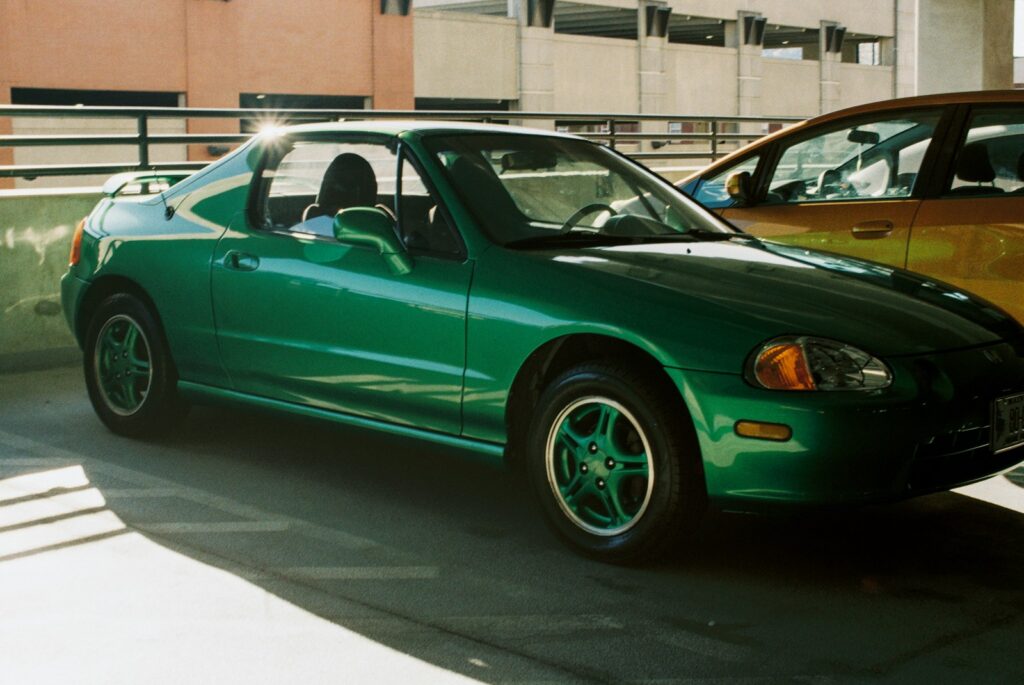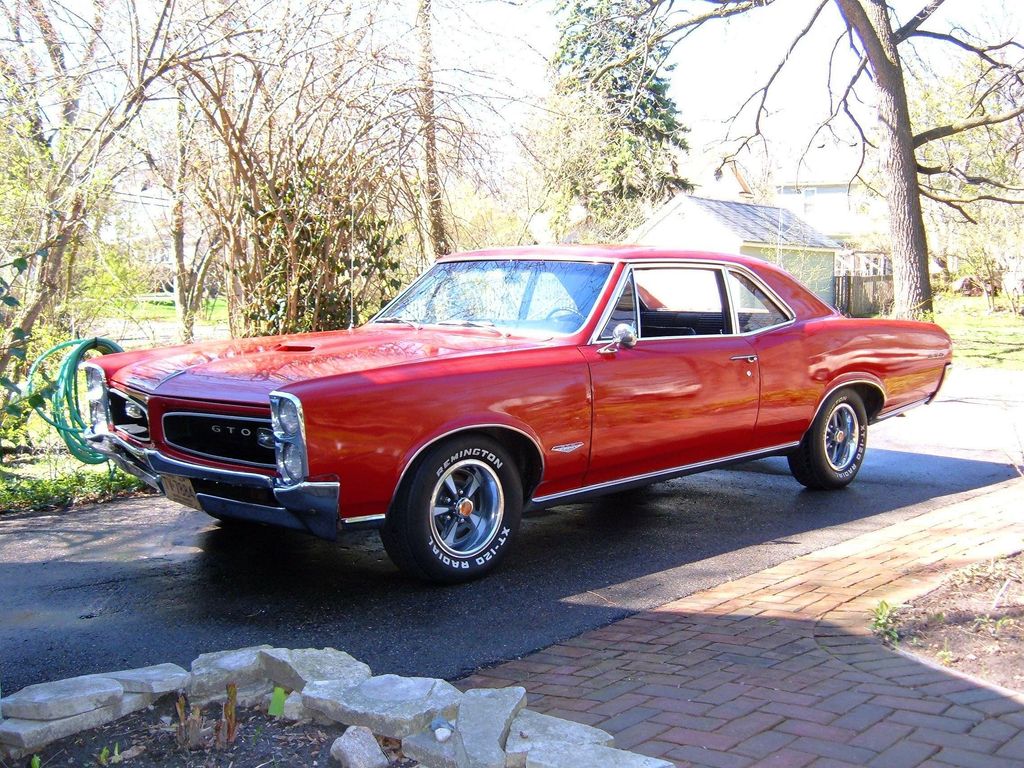
The quest to definitively answer “What’s Really The First Muscle Car Ever?” is one that has ignited countless debates among automotive enthusiasts and historians for decades. It’s a question less about a single definitive date or model, and more about understanding a groundbreaking philosophy that reshaped American automotive performance. This concept, born from the desire to combine raw power with accessible pricing, sparked a revolution that continues to captivate minds today.
While many associate the term “muscle car” with the roaring V8s and aggressive styling of the mid-1960s, the roots of this iconic segment stretch back much further, into an era of innovation and experimentation. Tracing these origins requires us to peel back the layers of automotive history, examining the pioneering vehicles and engineering feats that laid the groundwork for what would become a cultural phenomenon. Join us as we journey through the early chapters of American performance, exploring the cars that were truly the forerunners of the mighty muscle car.

1. **The Elusive Definition of a Muscle Car** Before we can pinpoint the “first,” it’s crucial to acknowledge the subjective and endlessly debated nature of the term “muscle car” itself. While there’s no single, universally agreed-upon definition, common characteristics often cited include a large, high-performance V8 engine, typically offered in the most powerful configuration for a particular model. These vehicles are almost always rear-wheel drive and were manufactured in the United States, primarily during the 1960s or early 1970s, with the specific year range of 1964–1973 sometimes used.
Another key aspect is the body style: a relatively lightweight two-door body. However, opinions vary widely on whether high-performance full-size cars, compacts, or pony cars truly qualify as muscle cars. Some purists argue that only mid-size cars fit the mold, a view not shared by leading industry publications like *Car and Driver*, *Road & Track*, and *Motor Trend*, which often include a broader range of high-powered American iron in their “muscle car” lists.
This ongoing debate highlights the spirit of the muscle car: it was about more than just specifications; it was about a feeling, a raw, unadulterated performance delivered to the masses. The concept evolved from the hot rodding philosophy of dropping a large-displacement engine into a smaller car to maximize straight-line speed, embodying an era where power was king and the open road called.
Read more about: Beyond the Scale: How One Woman’s Journey and Proven Strategies Can Transform Your Body and Mind
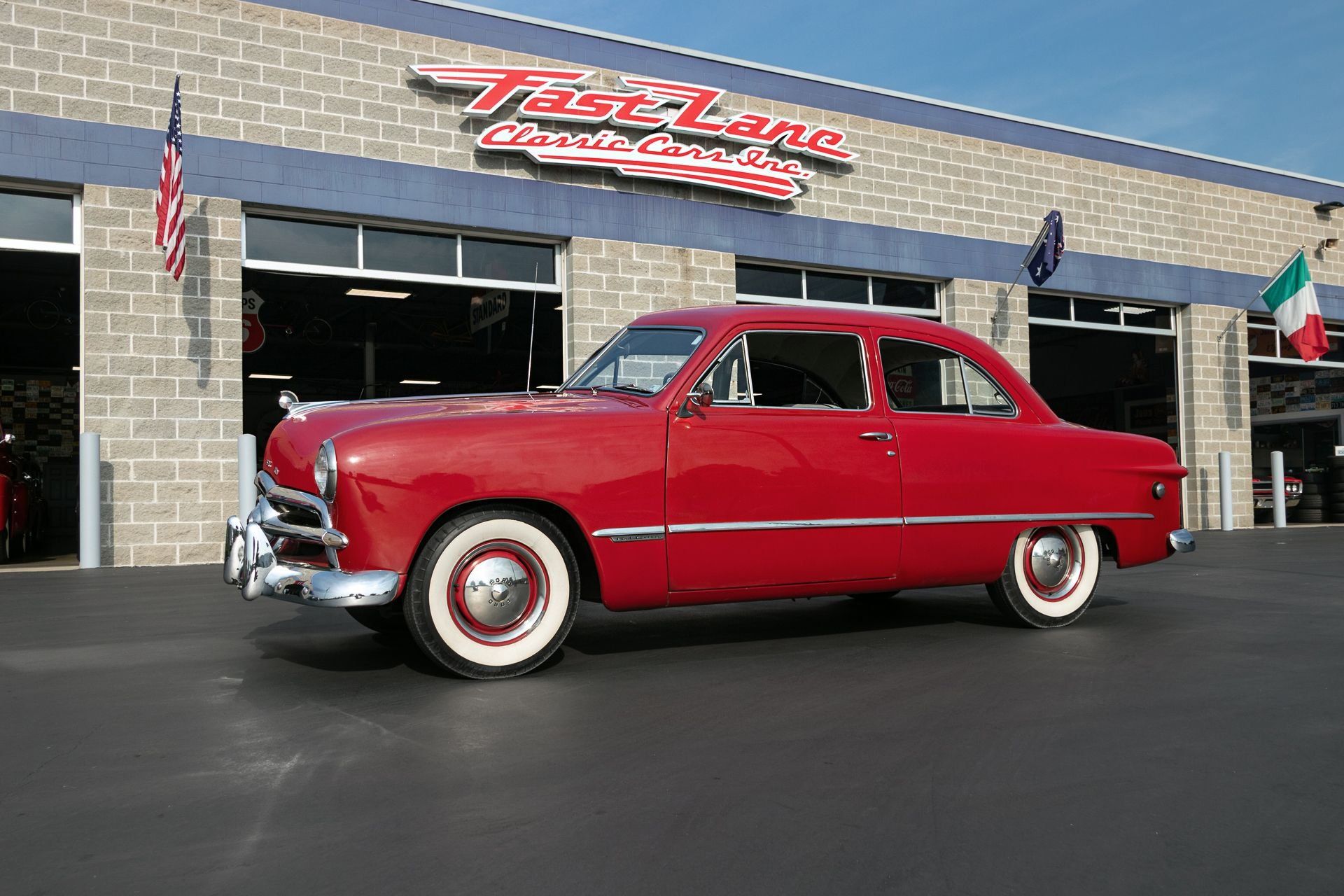
2. **The 1949 Oldsmobile Rocket 88: The Genesis of Power** Many automotive historians point to the 1949 Oldsmobile Rocket 88 as the true spiritual ancestor, if not the direct progenitor, of the American muscle car. This groundbreaking vehicle achieved something revolutionary: it combined General Motors’ powerful 303-cubic-inch (5 L) OHV Rocket V8 engine, previously exclusive to the luxurious Oldsmobile 98, with the smaller, lighter body of the six-cylinder Oldsmobile 76. This formula of putting a maker’s largest, most powerful engine in a smaller, lighter, more affordable vehicle is precisely what evolved into the “muscle car” category.
The impact of the Rocket 88 was immediate and undeniable. Producing 135 hp (101 kW) at 3600 rpm and 263 lb⋅ft (357 N⋅m) at 1800 rpm, it was a force to be reckoned with. Its dominance extended to the racetrack, famously winning eight out of ten races in the 1950 NASCAR season. Alongside the Cadillac 331 engine, also introduced in 1949, the Rocket 88’s Oldsmobile 303 V8 engine is credited with having “launched the modern era of the high-performance V-8,” forever changing the landscape of American automotive engineering.
Car Model Information: 2021 Buick Envision FWD Preferred
Name: Oldsmobile 88
Caption: 1996 Oldsmobile Eighty Eight LS
Manufacturer: Oldsmobile
ModelYears: 1949–1999
Class: Full-size car
Layout: FR layout
Predecessor: Oldsmobile L-Series
Successor: Oldsmobile Aurora
Categories: 1940s cars, 1950s cars, 1960s cars, 1970s cars, 1980s cars
Summary: The Oldsmobile 88 (marketed from 1989 on as the Eighty Eight) is a full-size car that was produced by the Oldsmobile Division of GM from 1949 until 1999. From 1950 until 1974, the 88 was the division’s most popular line, particularly the entry-level models such as the 88 and Dynamic 88. The 88 series was also an image leader for Oldsmobile, particularly in the model’s early years (1949–51), when it was one of the best-performing automobiles, thanks to its relatively small size, light weight, and advanced overhead-valve high-compression V8 engine. This engine, originally designed for the larger and more luxurious C-bodied 98 series, also replaced the straight-8 on the smaller B-bodied 78. With the large, high performance Oldsmobile Rocket V8, the early Oldsmobile 88 is considered by some to be the first muscle car.
Naming conventions used by GM since the 1910s for all divisions used alphanumeric designations that changed every year. Starting after the war, Oldsmobile changed their designations and standardized them so that the first number signified the chassis platform, while the second number signified how many cylinders. A large number of variations in nomenclature were seen over this long model run — Super, Golden Rocket, Dynamic, Jetstar, Delta, Delmont, Starfire, Holiday, LS, LSS, Celebrity, and Royale were used at various times with the 88 badge, and Fiesta appeared on some station wagons in the 1950s and 1960s. The name was more commonly shown as numerals in the earlier years (“Delta 88”, for example) and was changed to spell out “Eighty Eight” starting in 1989.
Get more information about: Oldsmobile 88
Buying a high-performing used car >>>
Brand: Oldsmobile Model: Rocket 88
Price: $20,775 Mileage: 37,332 mi.

3. **The 1955 Chrysler C-300: America’s Most Powerful Car** Just a few years after the Rocket 88, another automotive giant stepped onto the stage, making an even bolder statement with sheer horsepower. In 1955, Chrysler introduced the large-sized Chrysler C-300, the first in a celebrated 15-year series of performance-first Chryslers. This magnificent machine delivered a staggering 300 hp (224 kW) from its 331 cu in (5.4 L) V8 engine, a figure that was truly astounding for its time.
The C-300 was not just powerful; it was aggressively marketed as “America’s Most Powerful Car,” a claim it lived up to with remarkable performance. It could accelerate from 0 to 60 mph (97 km/h) in a blistering 9.8 seconds and reach a top speed of 130 miles per hour (209 km/h). Beyond its straight-line prowess, the 1955 Chrysler 300 also earned recognition as one of the best-handling cars of its era, proving that high performance could be paired with refined dynamics, setting a high bar for future performance vehicles.
Car Model Information: 2018 Chrysler 300 S
Name: Chrysler 300 letter series
Caption: 1964 Chrysler 300-K Coupe
Class: Personal luxury car,Muscle car,Grand tourer
Manufacturer: Chrysler Corporation
Production: 1955–1965,1970
Assembly: Detroit,Michigan
Layout: Front-engine, rear-wheel-drive layout
Predecessor: Chrysler Saratoga
Successor: Chrysler 300 non-letter series
Categories: 1950s cars, 1960s cars, All Wikipedia articles written in American English, All articles containing potentially dated statements, All articles with unsourced statements
Summary: The Chrysler 300 “letter series” are high-performance personal luxury cars that were built by Chrysler in the U.S. from 1955 to 1965 and were a sub-model from the Chrysler New Yorker. After the initial year, which was named C-300 for its standard 300 hp (220 kW) 331 cu in (5.4 L) FirePower V8, the 1956 cars were designated 300B. Successive model years were given the next letter of the alphabet as a suffix (skipping “i”), reaching the 300L by 1965, after which the model sequence was discontinued while the “300” remained. At its introduction it was advertised as “America’s Most Powerful Car”.
The 300 “letter series” cars were among the vehicles built by Chrysler after World War II that focused on performance, and thus can be considered the beginning of the muscle car, though full-sized and more expensive. Chrysler had a long history of producing race car products going back to the Chrysler Six that was entered in the 1925 24 Hours of Le Mans, 1928 24 Hours of Le Mans, 1929 24 Hours of Le Mans, and the Chrysler Imperial Eight roadster in the 1931 24 Hours of Le Mans. The 1955 C-300 and the 1956 300B were raced with very little modification at NASCAR races to include Watkins Glen International where it won races multiple times.
The automaker reintroduced the 300 designations again for performance-luxury sedans in 1999, using the 300M nameplate from 1999 to 2004, and expanding the 300 series with a reintroduction of a new Hemi-engineered V8 installed in the 300C, the top model of a new Chrysler 300 line, a new rear-wheel drive car launched in 2004 for the 2005 model year.
Get more information about: Chrysler 300 letter series
Buying a high-performing used car >>>
Brand: Chrysler Model: C-300
Price: $22,791 Mileage: 61,968 mi.
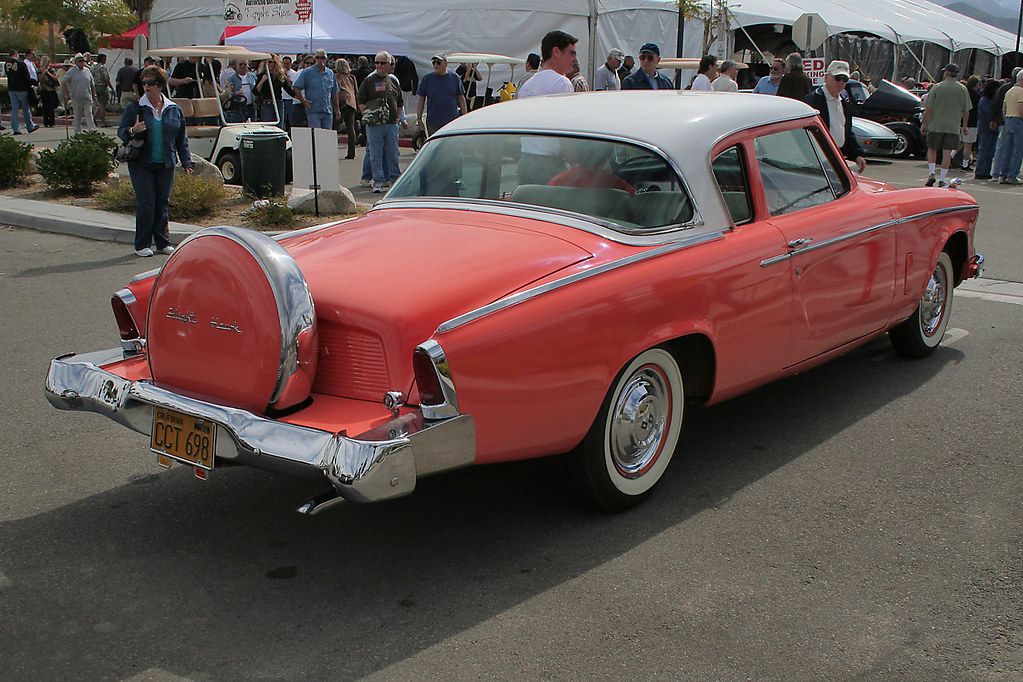
4. **The 1956 Studebaker Golden Hawk: A Compact Powerhouse** While the Oldsmobile Rocket 88 introduced the concept and the Chrysler C-300 showcased brute force in a large package, the 1956 Studebaker Golden Hawk brought serious performance to a more compact size. This stylish car was powered by a formidable 275 hp (205 kW) 352 cu in (5.8 L) Packard V8 engine. This made it a true contender in the burgeoning high-performance arena of the mid-1950s.
Notably, the Golden Hawk’s engine was the second most powerful available at the time, trailing only the mighty Chrysler 300. Its presence proved that the pursuit of power wasn’t limited to the largest or most luxurious vehicles, foreshadowing the diversity of models that would later embody the muscle car spirit. The Golden Hawk demonstrated that a well-engineered, compact-sized vehicle could indeed pack a significant punch, appealing to a different segment of performance enthusiasts.
Car Model Information: 2021 Buick Envision FWD Preferred
Layout: FR layout
Caption: 1956 Studebaker Golden Hawk
Name: Studebaker Golden Hawk
Manufacturer: Studebaker
Assembly: Studebaker Corporation#Studebaker Factories,South Bend, Indiana,United States,Studebaker Canada,Hamilton, Ontario,Canada
BodyStyle: hardtop
Categories: All articles needing additional references, All articles with unsourced statements, Articles needing additional references from June 2011, Articles with short description, Articles with unsourced statements from January 2016
Summary: The Studebaker Golden Hawk is a two-door pillarless hardtop personal luxury car produced by the Studebaker Corporation of South Bend, Indiana, between 1956 and 1958.
Get more information about: Studebaker Golden Hawk
Buying a high-performing used car >>>
Brand: Studebaker Model: Golden Hawk
Price: $20,775 Mileage: 37,332 mi.
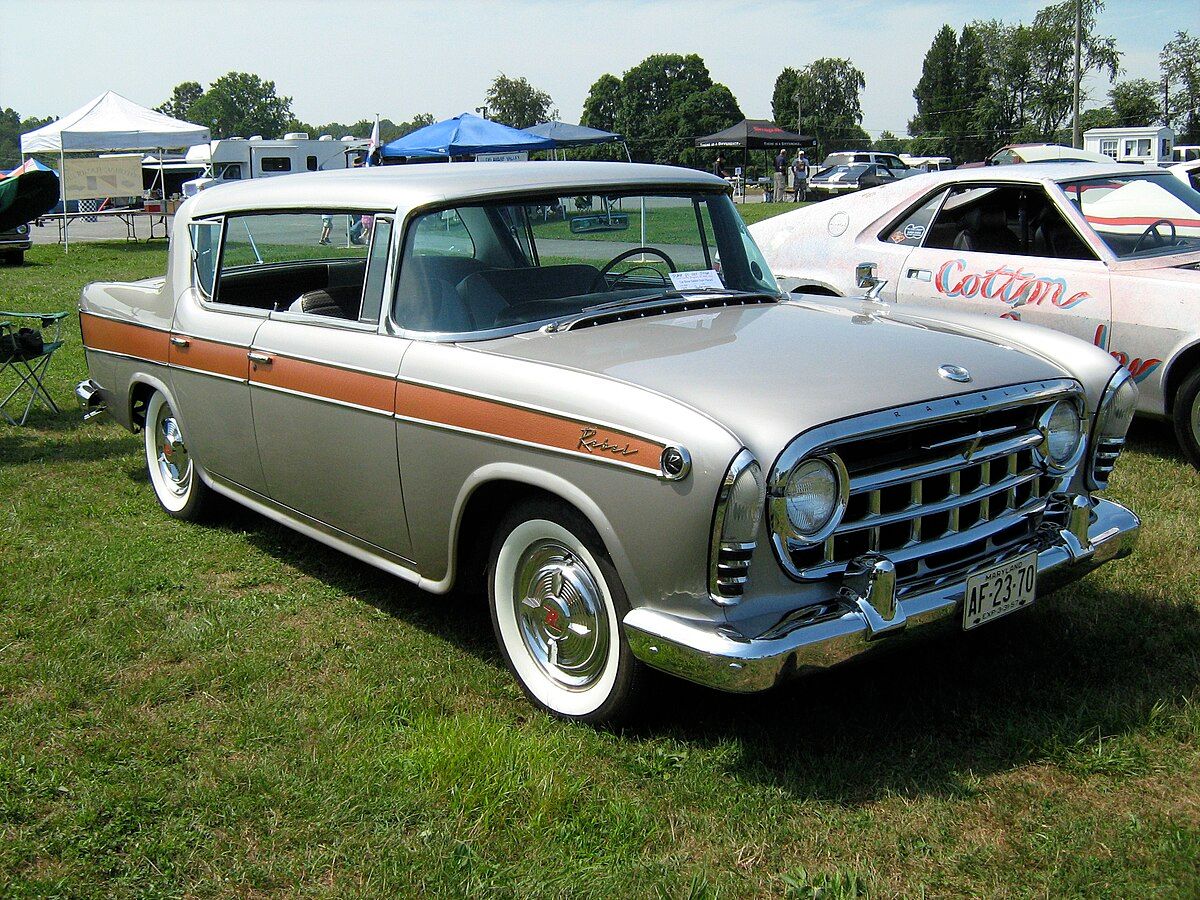
5. **The 1957 Rambler Rebel: Challenging the Mid-Size Norm** A pivotal moment in the muscle car’s lineage arrived in 1957 with the introduction of the Rambler Rebel by American Motors Corporation (AMC). This car is particularly significant because it was the first mid-sized car to be available with a big-block V8 engine, directly hitting a sweet spot that would later define the quintessential muscle car. The Rebel closely followed the burgeoning “muscle car formula,” aiming to “make ’em go fast as well as cheaply,” a critical element for mass appeal.
For these reasons, the 1957 Rambler Rebel is considered by some to be the very first true muscle car. Equipped with a 327 cu in (5.4 L) V8 engine producing 255 hp (190 kW), its acceleration was truly remarkable for its time. A 0–60 mph sprint in just 7.5 seconds made it the fastest stock American sedan of its era, a feat only surpassed by the fuel-injected Chevrolet Corvette by a mere half-second. The Rebel’s combination of power, size, and relative affordability made it a trailblazer, demonstrating the potential of high-performance in a more accessible package.
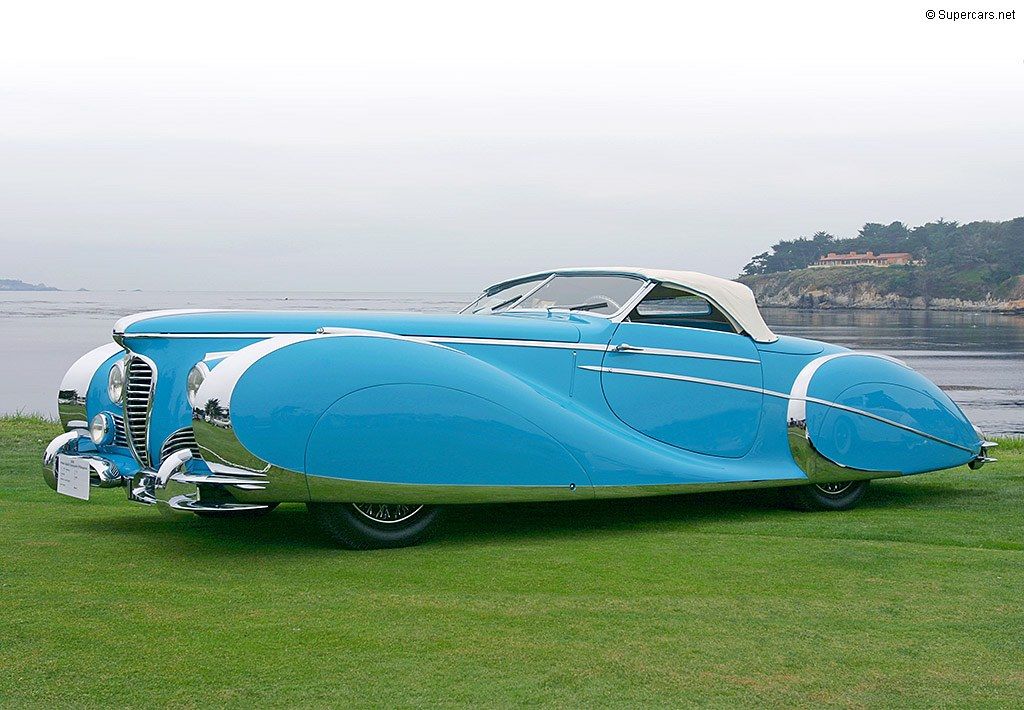
6. **Early “Supercars” and the Emerging Trend** Interestingly, before the term “muscle car” became commonplace, many of these high-performance American vehicles were initially referred to as “supercars” in the United States. This historical nuance highlights the evolving terminology and how the automotive landscape was being shaped in real time. For instance, the 1957 Rambler Rebel, a strong contender for the “first muscle car” title, was itself described as a “potent mill turned the lightweight Rambler into a veritable supercar.”
From the mid-1960s to the mid-1970s, “dragstrip bred” mid-size cars equipped with large V8 engines and rear-wheel drive were also frequently referred to as “supercars,” often more so than “muscle cars.” This period saw the “supercar” become an “industry trend” in 1966, as domestic automakers aimed to capitalize on this exciting new market with “eye-catching, heart-stopping cars.” Examples abound, from a May 1965 *Car Life* road test of the Pontiac GTO describing it as a supercar, to a 1968 *Car and Driver* review of the 1969 American Motors SC/Rambler explicitly stating it was ready to compete in “the Supercar street racer gang” market segment, with “SC” standing for SuperCar. The early supercar market segment in the U.S. included special versions of regular production models and even limited edition, dealer-converted vehicles, showcasing the diverse applications of the high-performance ethos before “muscle car” cemented its place in the lexicon.
Read more about: Untamed Beasts: The Most Outrageously Overpowered Muscle Cars That Pushed Street Limits
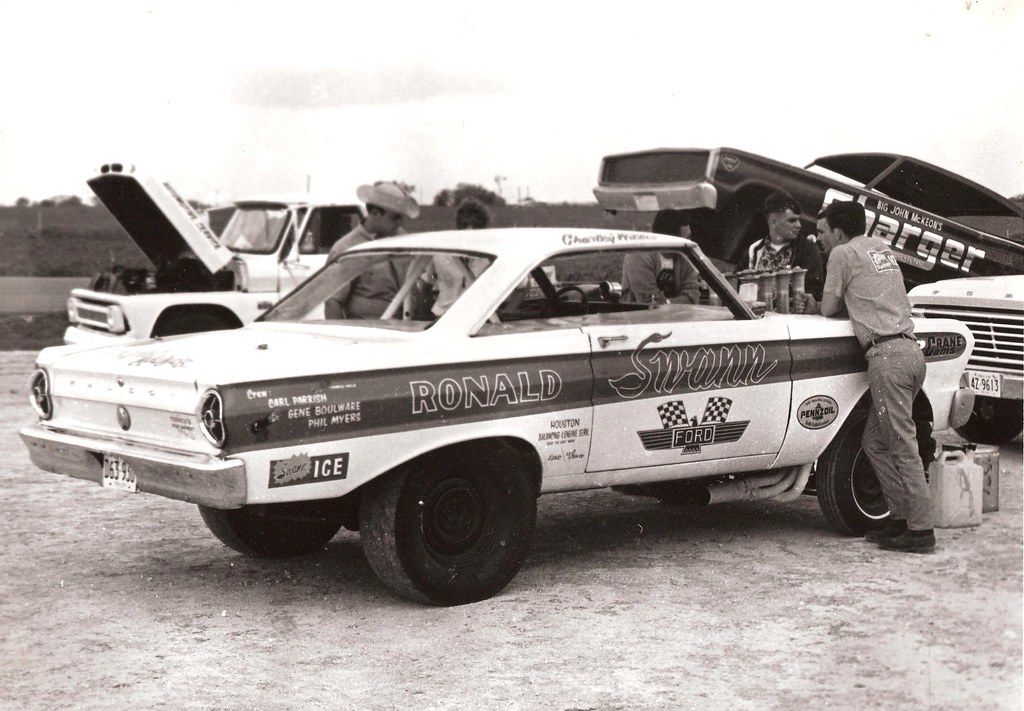
7. **1960s Drag Racing Influence: The “Factory Lightweights” Era** As the 1960s dawned, the popularity and performance of these early muscle car precursors grew dramatically, fueled by an intense rivalry on the drag strips of America. This era saw Mopar (Dodge, Plymouth, and Chrysler) and Ford lock into a fierce battle for supremacy in drag racing, pushing the boundaries of what mass-produced vehicles could achieve. This competition directly influenced the development of cars that, while perhaps not daily drivers, were undeniable progenitors of pure, unadulterated muscle.
This period gave rise to a specialized breed of vehicles known as “factory lightweights” or “factory experimental” cars. These were often limited-production, highly modified versions of standard models, built by the manufacturers specifically for drag racing homologation. They featured extensive weight-saving measures and highly tuned, powerful engines, sacrificing comfort and practicality for raw, straight-line speed. These machines, though few in number, served as extreme testaments to the engineering prowess and competitive spirit that defined the nascent muscle car movement, paving the way for the broader market.
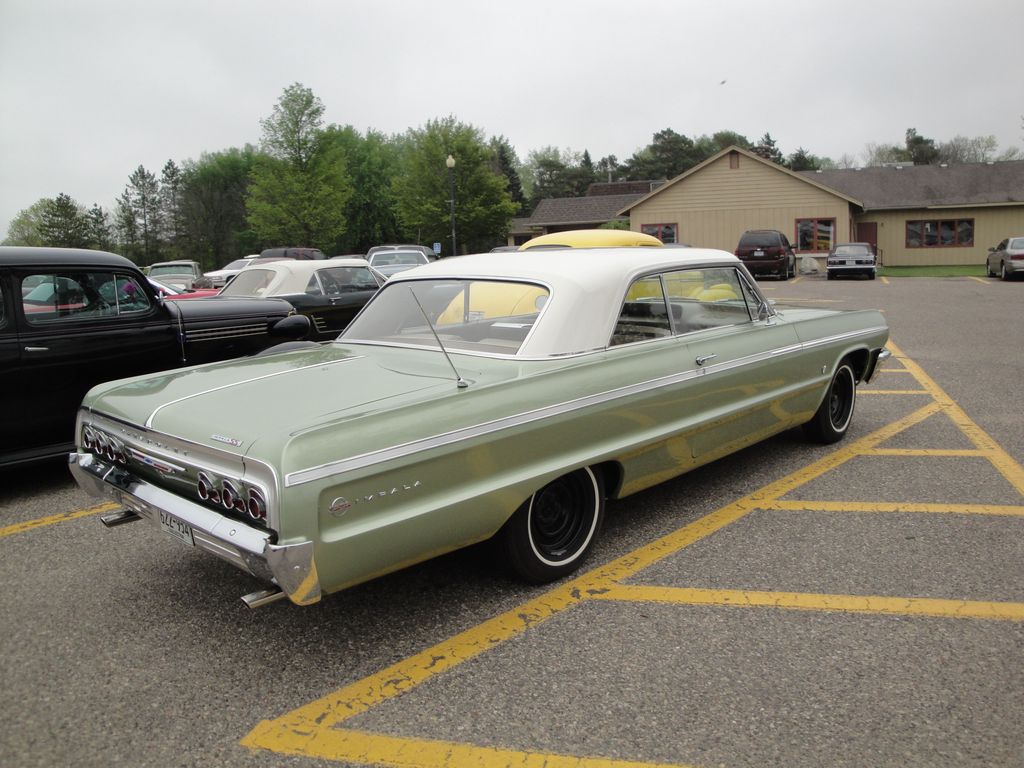
8. **The 1961 Chevrolet Impala SS 409: Setting the Pace** Among the early contenders to truly embody the drag racing influence was the 1961 Chevrolet Impala, which offered an “SS” (Super Sport) package for a mere $53.80. This option transformed the Impala into a serious performance machine, primarily by introducing the legendary 409 cu in (6.7 L) V8 engine, capable of producing an impressive 425 hp (317 kW). This was not merely an engine swap; the package also included crucial upgrades to the brakes, tires, and suspension, ensuring the car could handle its newfound power.
The Impala SS 409 quickly became an icon, famously immortalized in song and celebrated for its raw power and straight-line speed. It showcased Chevrolet’s commitment to high performance and set a new standard for what a full-sized American car could achieve on the street and the strip. Its blend of available power and comprehensive performance upgrades made it a significant milestone in the journey towards the fully realized muscle car, proving that factory-backed performance was not just a niche but a growing force.
Car Model Information: 1966 Chevrolet Impala SS
Name: Chevrolet Impala
Caption: Fourth generation model (1967)
Manufacturer: Chevrolet
Production: 1957–1985,1994–1996,1999–2020
ModelYears: 1958–1985,1994–1996,2000–2020
Predecessor: Chevrolet Bel Air,Chevrolet Lumina#Second generation (1995–2001)
Successor: Chevrolet SS,Chevrolet Caprice
Platform: GM B platform,GM W platform,GM W platform (GMX211) (2005–2013),GM Epsilon platform#Epsilon II
Class: Full-size car,Mid-size car
Layout: Front-engine, rear-wheel-drive layout,Front-engine, front-wheel-drive layout
Categories: 1960s cars, 1970s cars, 1980s cars, 1990s cars, 2000s cars
Summary: The Chevrolet Impala () is a full-size car that was built by Chevrolet for model years 1958 to 1985, 1994 to 1996, and 2000 to 2020. The Impala was Chevrolet’s popular flagship passenger car and was among the better-selling American-made automobiles in the United States.
For its debut in 1958, the Impala was distinguished from other models by its symmetrical triple taillights. The Chevrolet Caprice was introduced as a top-line Impala Sport Sedan for model year 1965, later becoming a separate series positioned above the Impala in 1966, which, in turn, remained above the Chevrolet Bel Air and the Chevrolet Biscayne. The Impala continued as Chevrolet’s most popular full-sized model through the mid-1980s. Between 1994 and 1996, the Impala was revised as a 5.7-liter V8–powered version of the Chevrolet Caprice Classic sedan.
In 2000, the Impala was reintroduced again as a mainstream front-wheel drive car. In February 2014, the 2014 Impala ranked No. 1 among Affordable Large Cars in U.S. News & World Report’s rankings. When the 10th generation of the Impala was introduced for the 2014 model year, the 9th generation was rebadged as the Impala Limited and sold only to fleet customers through 2016. During that time, both versions were sold in the United States and Canada. The 10th-generation Impala was also sold in the Middle East and South Korea.
Get more information about: Chevrolet Impala
Buying a high-performing used car >>>
Brand: Chevrolet Model: Impala
Price: $56,991 Mileage: 51,426 mi.
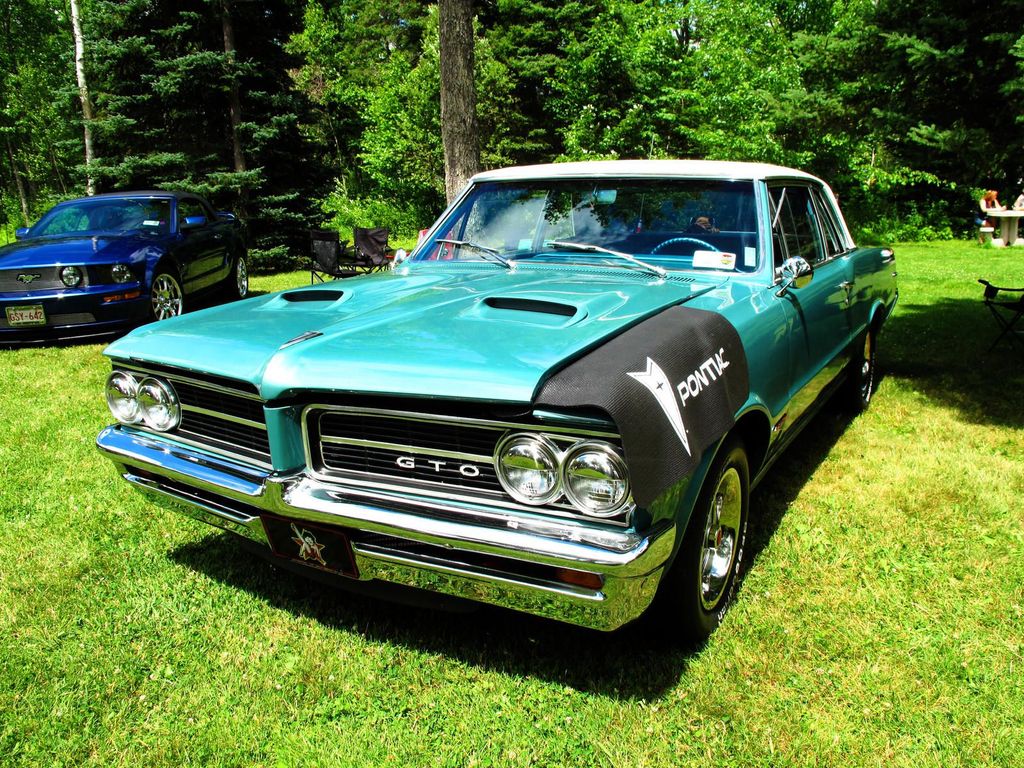
9. **The 1964 Pontiac GTO: The Definitive Muscle Car Emerges**The 1964 Pontiac GTO holds a pivotal place in automotive history, widely credited with defining and popularizing the muscle car era as we know it. Introduced as an optional package for the intermediate-size Pontiac Tempest, it wasn’t just another performance variant; it was a strategically brilliant move by Pontiac division president John DeLorean. This car perfectly embodied the core philosophy of the muscle car: taking a powerful engine and dropping it into a lighter, more accessible body, a formula that would soon sweep the nation.
Initially powered by a robust 389 cubic inch (6.4 L) V8 engine, the GTO produced a formidable 325 horsepower (242 kW), a figure that, when paired with the lighter Tempest chassis, translated into exhilarating performance. Its success was immediate and undeniable, quickly capturing the public imagination and demonstrating the immense market potential for high-performance vehicles that weren’t necessarily full-sized or prohibitively expensive. The GTO’s appeal lay in its ability to offer thrilling speed and a powerful presence at a relatively affordable price point, making high-octane excitement accessible to a broader audience.
This innovative approach of combining raw power with a mid-sized platform set a new benchmark, directly inspiring other manufacturers to follow suit and igniting a fierce horsepower war across Detroit. The GTO’s impact extended beyond sales figures; it fundamentally reshaped the perception of performance cars, making them a tangible dream for a larger segment of the American public. It proved that the essence of a ‘supercar’ – a term previously used for some early performance models – could be distilled into a mass-produced, exhilarating package, cementing the mid-size, big-engine formula that would dominate the muscle car landscape for years to come.
Car Model Information: 1966 Pontiac GTO Coupe
Name: Pontiac GTO
Caption: 2005 Pontiac GTO
Manufacturer: Pontiac (automobile),Holden
Class: Mid-size car,Compact car,Mid-size car
Production: 1963–1974,2003–2006
Predecessor: Pontiac Tempest
Layout: Front-engine, rear-wheel-drive layout
Categories: 1970s cars, 2000s cars, All articles with unsourced statements, Articles with short description, Articles with unsourced statements from October 2008
Summary: The Pontiac GTO is a front-engine, rear-drive, two-door, and four-passenger automobile manufactured and marketed by the Pontiac division of General Motors over four generations from 1963 until 1974 in the United States — with a fifth generation made by GM’s Australian subsidiary, Holden, for the 2004 through 2006 model years.
The first generation of the GTO is credited with popularizing the muscle car market segment in the 1960s. Some consider the Pontiac GTO to have started the trend with all four domestic automakers offering a variety of competing models.
For the 1964 and 1965 model years, the GTO was an optional package on the intermediate-sized Pontiac LeMans. The 1964 GTO vehicle identification number (VIN) started with 22, while the 1965 GTO VIN began with 237. The GTO was designated as a separate Pontiac model from 1966 through 1971 (VIN 242…). It became an optional package again for the 1972 and 1973 intermediate LeMans. For 1974, the GTO was an optional trim package on the compact-sized Ventura.
The GTO model was revived for the 2004 through 2006 model years as a captive import for Pontiac, a left-hand drive version of the Holden Monaro, itself a coupé variant of the Holden Commodore.
Get more information about: Pontiac GTO
Buying a high-performing used car >>>
Brand: Pontiac Model: GTO
Price: $59,991 Mileage: 4,408 mi.

10. **The General Motors & American Motors Response: Expanding the Battleground**The resounding success of the Pontiac GTO didn’t go unnoticed by its sibling divisions within General Motors, nor by competitors like American Motors Corporation (AMC). Recognizing the burgeoning market and the GTO’s undeniable influence, other GM divisions quickly moved to develop their own muscle cars based on intermediate-sized platforms, replicating the winning formula. This led to the rapid introduction of formidable contenders such as the 1964 Oldsmobile 442, the 1964 Chevrolet Chevelle SS, and the 1965 Buick Gran Sport, each bringing its unique flavor of performance and styling to the table.
Meanwhile, American Motors, which had long been seen as a distant fourth behind Detroit’s ‘Big Three,’ boldly entered the ‘horsepower wars’ under the guidance of designer Dick Teague. By 1968, AMC had significantly enlarged its V8 engine to a potent 390 cubic inches (6.4 L), capable of producing 315 horsepower (235 kW). This powerful new engine was strategically deployed in several models, including the 1968 AMC Rebel SST, the sporty AMC Javelin Go-package, and the distinctive two-seat AMC AMX. These models were part of AMC’s ‘clean sheet’ approach, aimed at directly competing in this exciting new market segment.
These new entries from GM and AMC significantly broadened the muscle car landscape, intensifying competition and offering consumers an unprecedented array of choices. From the luxurious power of the Oldsmobile 442 to the sleek, aggressive lines of the AMC Javelin and AMX, the market was flooded with ‘eye-catching, heart-stopping cars.’ This period marked a true expansion of the muscle car concept, moving beyond a single pioneering model to a full-fledged industry trend driven by domestic automakers, each vying for supremacy on the street and the strip.
Car Model Information: 1966 Pontiac GTO Coupe
Name: Pontiac GTO
Caption: 2005 Pontiac GTO
Manufacturer: Pontiac (automobile),Holden
Class: Mid-size car,Compact car,Mid-size car
Production: 1963–1974,2003–2006
Predecessor: Pontiac Tempest
Layout: Front-engine, rear-wheel-drive layout
Categories: 1970s cars, 2000s cars, All articles with unsourced statements, Articles with short description, Articles with unsourced statements from October 2008
Summary: The Pontiac GTO is a front-engine, rear-drive, two-door, and four-passenger automobile manufactured and marketed by the Pontiac division of General Motors over four generations from 1963 until 1974 in the United States — with a fifth generation made by GM’s Australian subsidiary, Holden, for the 2004 through 2006 model years.
The first generation of the GTO is credited with popularizing the muscle car market segment in the 1960s. Some consider the Pontiac GTO to have started the trend with all four domestic automakers offering a variety of competing models.
For the 1964 and 1965 model years, the GTO was an optional package on the intermediate-sized Pontiac LeMans. The 1964 GTO vehicle identification number (VIN) started with 22, while the 1965 GTO VIN began with 237. The GTO was designated as a separate Pontiac model from 1966 through 1971 (VIN 242…). It became an optional package again for the 1972 and 1973 intermediate LeMans. For 1974, the GTO was an optional trim package on the compact-sized Ventura.
The GTO model was revived for the 2004 through 2006 model years as a captive import for Pontiac, a left-hand drive version of the Holden Monaro, itself a coupé variant of the Holden Commodore.
Get more information about: Pontiac GTO
Buying a high-performing used car >>>
Brand: Pontiac Model: GTO
Price: $59,991 Mileage: 4,408 mi.
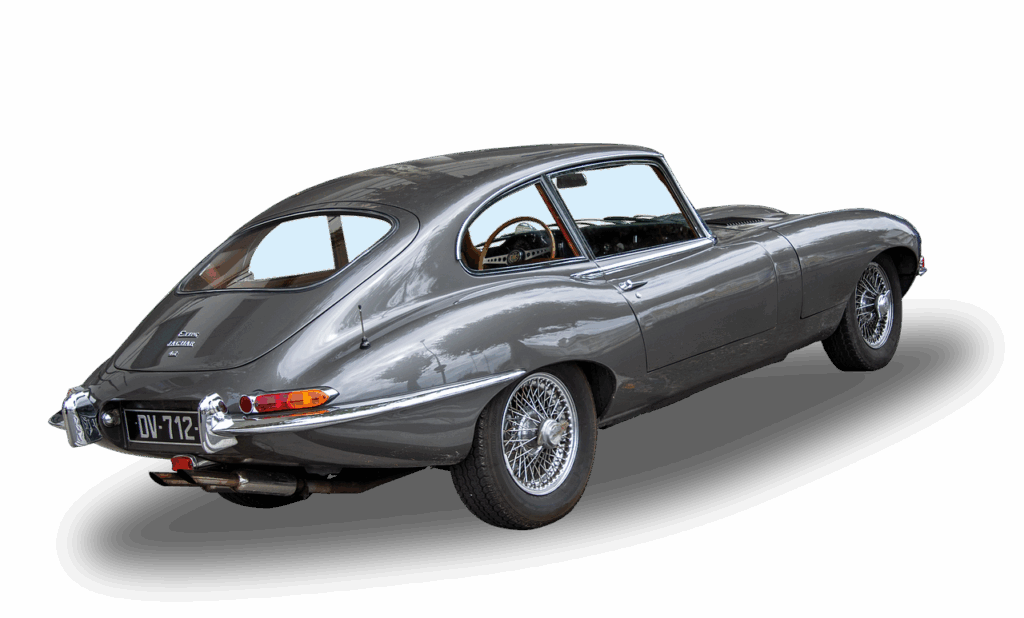
11. **The ‘Budget’ Muscle Phenomenon: Performance for the Masses**As the 1960s progressed, many popular ‘performance-oriented’ cars began to incorporate more optional equipment and luxury appointments. While enhancing comfort and style, this trend also added considerable weight and power-consuming accessories, necessitating even more powerful engines to maintain performance levels. Consequently, these increasingly sophisticated models became more expensive, creating a clear opportunity and a burgeoning niche for a new breed of muscle car: the ‘budget’ muscle car.
This innovative concept aimed to deliver high performance at a significantly lower price point, stripping down intermediate-sized cars to their powerful essentials. This philosophy of providing ‘high performance at lower prices’ was brilliantly exemplified by the 1968 Plymouth Road Runner and its companion, the 1968 Dodge Super Bee. These vehicles eschewed lavish trims and excessive features in favor of raw, unadulterated power, designed specifically to undercut the more expensive, stylish, and better-appointed models from General Motors and Ford that had come to define the market.
The 1968 Plymouth Road Runner, for instance, became a true icon of this philosophy, even being awarded Motor Trend magazine’s Car of the Year in 1969. With optional performance parts such as intake and exhaust manifolds, an upgraded carburetor, and drag-racing tires, a customized Road Runner could achieve an impressive quarter-mile time of 14.7 seconds at 100.6 mph, all at a base price of US$3,893. The Plymouth Barracuda, a pony car originally based on a compact body, also joined the ranks when equipped with the famed Chrysler 426 Hemi, demonstrating how even smaller platforms could be transformed into formidable, accessible muscle for the everyday enthusiast.
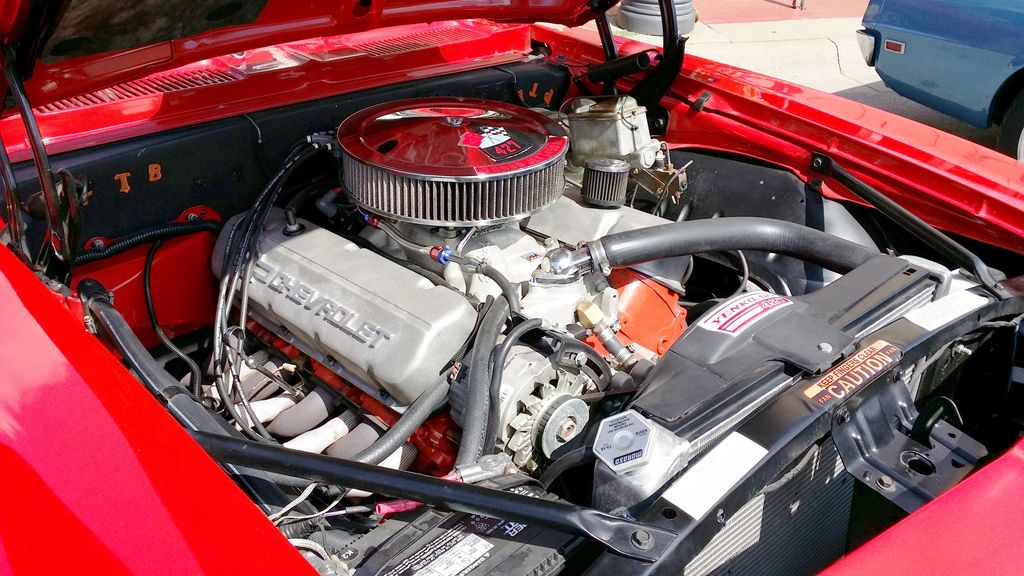
12. **The Apex of Power: Chevrolet’s 454 and AMC’s ‘The Machine’**The horsepower war escalated dramatically as the muscle car era approached its zenith around 1970, with manufacturers pushing engine output to unprecedented levels in a fierce competition for bragging rights. Chevrolet, for example, made its formidable 427 cubic inch (7.0 L) L72 big-block engine available in the mid-sized Chevelle in 1969 as the COPO 427 option. While Chevrolet officially rated this engine at 425 horsepower (317 kW), the National Hot Rod Association (NHRA) claimed its actual power output was a staggering 450 horsepower (340 kW), underscoring its raw capability. This powerful Chevelle could run a 13.3-second quarter-mile at 108 mph, showcasing incredible street and strip prowess.
The following year, Chevrolet introduced the ‘Chevelle SS 454’ model, equipped with the monstrous 454 cubic inch (7.4 L) Chevrolet LS6 big-block engine. This engine boasted an official factory rating of 450 horsepower (336 kW), marking the highest official factory rating at that time and cementing the Chevelle’s status as a king of the streets. This period saw manufacturers valuing the ‘halo effect’ of these extreme models, even if they sold in relatively small volumes, as they generated immense publicity and boosted brand image, pulling customers into showrooms to see these ‘heart-stopping cars.’
Not to be outdone in this peak performance push, American Motors also delivered its fastest muscle car during this era: the distinctive mid-sized 1970 AMC Rebel ‘The Machine.’ Powered by a potent 390 cubic inch (6.4 L) engine producing 340 horsepower (254 kW), ‘The Machine’ was a true performer in its own right. It could sprint from 0 to 60 mph in 6.8 seconds and complete a quarter-mile run in 14.4 seconds at 99 mph. These high-output models truly epitomized the raw power and aggressive performance that defined the muscle car segment at its absolute, unbridled peak, before external factors began to shift the landscape.
Car Model Information: 1969 Chevrolet Chevelle SS
Name: Chevrolet Chevelle
Caption: 1970 Chevrolet Chevelle SS 396 Sport Coupe
Manufacturer: Chevrolet
Production: 1963–1977
ModelYears: 1964–1977
Class: Mid-size
Platform: GM A platform (RWD)
Layout: FR layout
Successor: Chevrolet Malibu
Categories: 1970s cars, All articles needing additional references, All articles that may contain original research, All articles with specifically marked weasel-worded phrases, All articles with unsourced statements
Summary: The Chevrolet Chevelle is a mid-sized automobile that was produced by the Chevrolet division of General Motors (GM) in three generations for the 1964 to 1977 model years. Part of the GM A-body platform, the Chevelle was one of Chevrolet’s most successful nameplates. Body styles included coupes, sedans, convertibles, and station wagons. The “Super Sport” versions were produced through the 1973 model year and Lagunas from 1973 through to 1976.
After a four-year absence, the El Camino was reintroduced as part of the new Chevelle lineup in 1964.
From 1964 to 1969, GM of Canada sold a modified version of the Chevelle that included a Pontiac-style grille, and a LeMans instrument panel, marketed as the Beaumont.
The Malibu was the top-of-the-line model to 1972, and completely replaced the Chevelle nameplate starting with the redesigned, and downsized 1978 model year.
Get more information about: Chevrolet Chevelle
Buying a high-performing used car >>>
Brand: Chevrolet Model: Chevelle
Price: $119,550 Mileage: 93 mi.
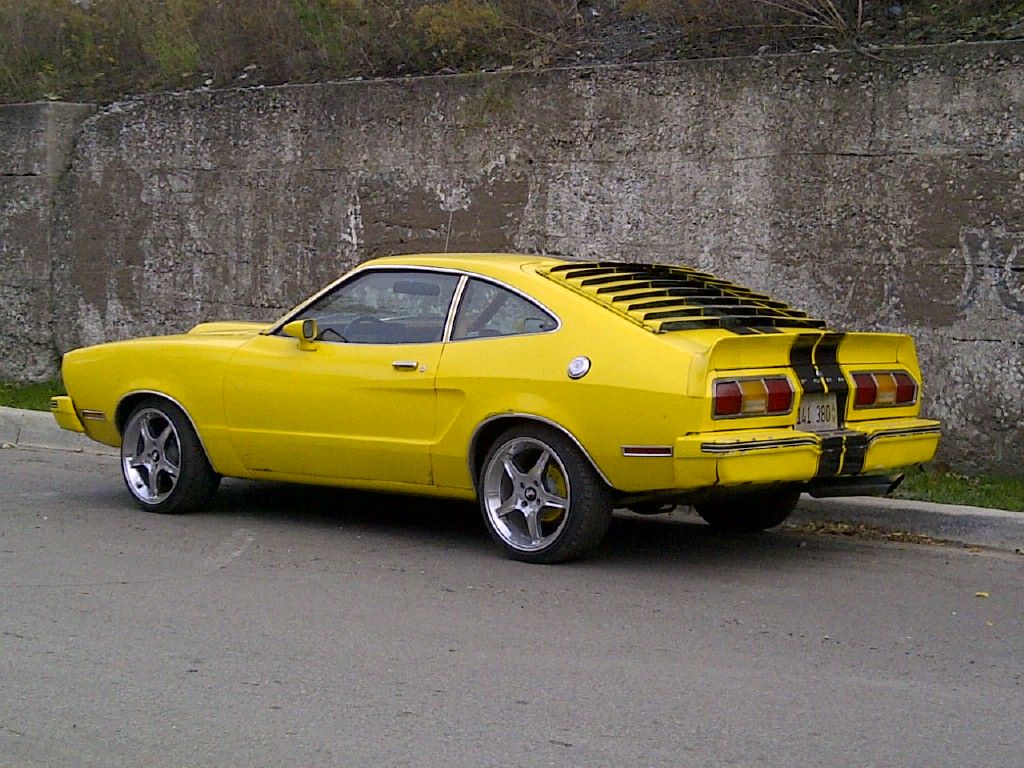
13. **The Unraveling: Decline of the Muscle Car Era in the 1970s**The glorious reign of the muscle car began to unravel in the early and mid-1970s, succumbing to a perfect storm of economic, environmental, and regulatory pressures that reshaped the automotive landscape. The Clean Air Act of 1970 marked a profound turning point, mandating strict emissions controls and a fundamental switch to unleaded fuel. Prior to this legislation, a majority of muscle cars came optioned with high-compression engines, some soaring as high as 11:1, which crucially required the high-octane leaded fuel that was common at the time.
With the passage of the Clean Air Act, octane ratings were lowered to 91 (due in part to the removal of lead), forcing manufacturers to significantly reduce the compression ratio of their engines. This directly resulted in a drastic reduction in performance, as Detroit’s engineering focus shifted away from increasing power outputs towards combating air pollution. The very essence of what made a muscle car a muscle car — uncompromised power — was being systematically drained by these necessary regulatory changes, marking a stark contrast to the horsepower wars of previous years.
Compounding these challenges were sharply increased insurance costs for performance cars, which made ownership increasingly prohibitive for many, alongside the devastating impact of the 1970s energy crisis. The 1973 oil crisis notably resulted in widespread fuel rationing and sustained higher prices, quickly rendering gas-guzzling muscle cars unaffordable and impractical for the average consumer. With performance compromised, fuel efficiency becoming a critical concern, and insurance rates soaring, the golden age of muscle cars effectively ended when Ford introduced a much-downsized, base inline 4-cylinder powered Mustang II in 1974, signaling a stark departure from the segment’s defining characteristics and ushering in what many refer to as the ‘malaise era’ in American automotive history.

14. **From Hibernation to High-Output: The 1980s and 1990s Revival**Despite the apparent demise of the muscle car in the 1970s, the spirit of American performance was merely in hibernation, not extinguished. The early 1980s saw a noticeable resurgence in muscle car performance, marked by the reintroduction of high-output V8 engines in iconic models. The Ford Mustang GT, Chevrolet Camaro Z28, and Pontiac Firebird Formula/Trans Am spearheaded this revival, bringing back much-needed horsepower to a market eager for American-made speed.
Initially relying on four-barrel carburetors, these vehicles steadily improved their performance and fuel economy throughout the mid-1980s, thanks to crucial advancements in electronic fuel injection systems and sophisticated engine management controls. This technological evolution allowed for greater efficiency and reliability without sacrificing the exhilarating power that defined muscle cars, laying the groundwork for even higher performance. The resurgence also extended to intermediate two-door coupes like the Chevrolet Monte Carlo SS and the Buick Regal, demonstrating a broader return to form.
Notably, the Buick Regal took a unique and highly effective path to performance, utilizing powerful turbocharged V6 engines in its Grand National, Turbo-T, T-Type, and GNX models. These boosted V6s astonishingly rivaled the performance of traditional V8 engines, proving that brute force wasn’t the only way to achieve muscle car levels of speed and quickness. By the mid-1990s, a few strong muscle car contenders remained in production, including the fourth-generation Ford Mustang, the supercharged tenth-generation Ford Thunderbird Super Coupe, and the fourth-generation Chevrolet Camaro and Pontiac Firebird, cementing the segment’s gradual but determined return to prominence and setting the stage for future evolutions.
Car Model Information: 2021 Buick Envision FWD Preferred
Name: Ford Mustang
Caption: 2018 Ford Mustang GT 5.0
Aka: Ford T5 (Germany)
Manufacturer: Ford Motor Company
Production: March 1964 – present
ModelYears: 1965–present
Class: Unbulleted list
BodyStyle: Unbulleted list
Layout: Front-engine, rear-wheel-drive layout
Categories: 1970s cars, 1980s cars, 1990s cars, 2+2 coupés, 2000s cars
Summary: The Ford Mustang is a series of American automobiles manufactured by Ford. In continuous production since 1964, the Mustang is currently the longest-produced Ford car nameplate. Currently in its seventh generation, it is the fifth-best selling Ford car nameplate. The namesake of the “pony car” automobile segment, the Mustang was developed as a highly styled line of sporty coupes and convertibles derived from existing model lines, initially distinguished by “long hood, short deck” proportions.
Originally predicted to sell 100,000 vehicles yearly, the 1965 Mustang became the most successful vehicle launch since the 1927 Model A. Introduced on April 17, 1964 (16 days after the Plymouth Barracuda), over 400,000 units were sold in its first year; the one-millionth Mustang was sold within two years of its launch. In August 2018, Ford produced the 10-millionth Mustang; matching the first 1965 Mustang, the vehicle was a 2019 Wimbledon White convertible with a V8 engine.
The success of the Mustang launch led to multiple competitors from other American manufacturers, including the Chevrolet Camaro and Pontiac Firebird (1967), AMC Javelin (1968), and Dodge Challenger (1970). It also competed with the Plymouth Barracuda, which was launched around the same time. The Mustang also had an effect on designs of coupes worldwide, leading to the marketing of the Toyota Celica and Ford Capri in the United States (the latter, by Lincoln-Mercury). The Mercury Cougar was launched in 1967 as a unique-bodied higher-trim alternative to the Mustang; during the 1970s, it included more features and was marketed as a personal luxury car.
From 1965 until 2004, the Mustang shared chassis commonality with other Ford model lines, staying rear-wheel-drive throughout its production. From 1965 to 1973, the Mustang was derived from the 1960 Ford Falcon compact. From 1974 until 1978, the Mustang (denoted Mustang II) was a longer-wheelbase version of the Ford Pinto. From 1979 until 2004, the Mustang shared its Fox platform chassis with 14 other Ford vehicles (becoming the final one to use the Fox architecture). Since 2005, Ford has produced two generations of the Mustang, each using a distinct platform unique to the model line.
Through its production, multiple nameplates have been associated with the Ford Mustang series, including GT, Mach 1, Boss 302/429, Cobra (separate from Shelby Cobra), and Bullitt, along with “5.0” fender badging (denoting 4.9 L OHV or 5.0 L DOHC V8 engines).
Get more information about: Ford Mustang
Buying a high-performing used car >>>
Brand: Ford Model: Mustang GT
Price: $20,775 Mileage: 37,332 mi.
15. **A Modern Reimagining: Retro Styling, Global Reach, and the Future**The 2000s ushered in a new, exciting chapter for the muscle car, characterized prominently by a wave of retro-styled designs that deliberately evoked the classic appearances of their 1960s predecessors. This movement began with the 2004 Pontiac GTO relaunch in the United States, a rebadged captive import of the Holden Monaro, though it was critically noted for being ‘nothing like the old aggressive and evocative model from the 60s’ and was subsequently discontinued. However, it inadvertently paved the way for more successful retro interpretations that truly captured the essence of the originals.
In 2005, Chrysler boldly reintroduced muscle car heritage into high-performance V8-powered versions of four-door sedans like the Dodge Charger and Chrysler 300C, bravely utilizing revered nameplates traditionally associated with two-door muscle cars. The same year, Ford launched the fifth-generation Mustang, meticulously designed with strong visual links to the original first-generation model, successfully bringing back the aggressive lines and vibrant colors that enthusiasts cherished. Chevrolet followed suit in 2009 with the fifth-generation Camaro, which bore a striking resemblance to the iconic 1969 first-generation model, and Dodge re-introduced the Challenger in 2008, drawing direct styling links to its 1970 ancestor. These models solidified the ‘retro’ trend, appealing powerfully to a nostalgic fan base while incorporating essential modern technology and performance.
The muscle car phenomenon also had a significant global reach, developing distinct identities and evolutions in countries like Australia and Argentina. Australia’s muscle car history, for instance, saw models like the 1971–1972 Ford Falcon GTHO, Holden Monaro 350, and Chrysler Valiant Charger R/T become local legends, born from homologation for motor racing. Argentina produced its own acclaimed muscle cars, including the Chevrolet ‘Chevy’ (based on the Nova), the ‘Línea Dodge’ (from the Dart), and the remarkably popular Torino, which continued production under Renault after IKA was acquired. As consumer trends continue to shift towards crossovers and SUVs, traditional coupes face ongoing challenges, yet manufacturers are adapting, exploring performance-oriented ‘muscle’ versions of larger vehicles like the Dodge Durango Hellcat. The future also hints strongly at electrification, with the 2024 Dodge Charger Daytona, initially released with a battery electric powertrain, marking the first electric muscle car to enter production, promising a new, powerful, and undoubtedly controversial chapter for these beloved performance machines.
Car Model Information: 1966 Pontiac GTO Coupe
Name: Pontiac GTO
Caption: 2005 Pontiac GTO
Manufacturer: Pontiac (automobile),Holden
Class: Mid-size car,Compact car,Mid-size car
Production: 1963–1974,2003–2006
Predecessor: Pontiac Tempest
Layout: Front-engine, rear-wheel-drive layout
Categories: 1970s cars, 2000s cars, All articles with unsourced statements, Articles with short description, Articles with unsourced statements from October 2008
Summary: The Pontiac GTO is a front-engine, rear-drive, two-door, and four-passenger automobile manufactured and marketed by the Pontiac division of General Motors over four generations from 1963 until 1974 in the United States — with a fifth generation made by GM’s Australian subsidiary, Holden, for the 2004 through 2006 model years.
The first generation of the GTO is credited with popularizing the muscle car market segment in the 1960s. Some consider the Pontiac GTO to have started the trend with all four domestic automakers offering a variety of competing models.
For the 1964 and 1965 model years, the GTO was an optional package on the intermediate-sized Pontiac LeMans. The 1964 GTO vehicle identification number (VIN) started with 22, while the 1965 GTO VIN began with 237. The GTO was designated as a separate Pontiac model from 1966 through 1971 (VIN 242…). It became an optional package again for the 1972 and 1973 intermediate LeMans. For 1974, the GTO was an optional trim package on the compact-sized Ventura.
The GTO model was revived for the 2004 through 2006 model years as a captive import for Pontiac, a left-hand drive version of the Holden Monaro, itself a coupé variant of the Holden Commodore.
Get more information about: Pontiac GTO
Buying a high-performing used car >>>
Brand: Pontiac Model: GTO
Price: $59,991 Mileage: 4,408 mi.
From its contested origins in the late 1940s to its modern, electrified interpretations, the journey of the muscle car is a profound testament to American ingenuity and an enduring love affair with raw power and accessible speed. What started as an experimental fusion of big engines and smaller bodies blossomed into a cultural icon, weathered decades of profound change, and continues to evolve, proving that the thrill of a powerful, American-made machine is a timeless and deeply captivating pursuit. The debate over the ‘first’ may never truly end, and perhaps that’s the point; the true legacy of these extraordinary vehicles lies not in a single definitive answer, but in the collective roar of every V8, every quarter-mile sprint, and every enthusiast’s passion, each a thunderous chapter in automotive history that undeniably continues to rumble on.

